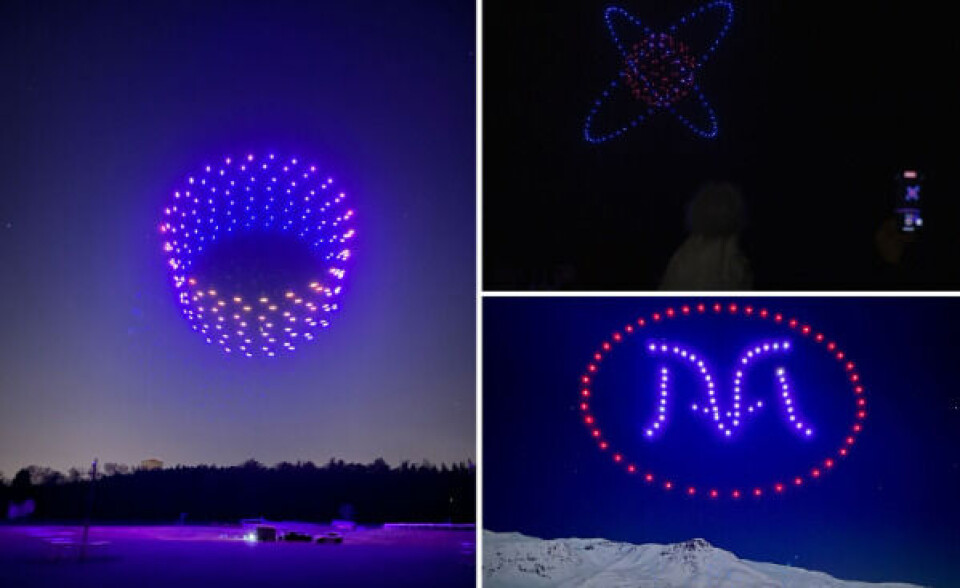-
French nature festival is a paradise for bird watchers
The spring event runs from April 12-20, showcasing the rich flora and fauna of the Baie de Somme
-
D-Day silhouettes overlooking the British Normandy Memorial return for a second year
‘I don’t think anyone could walk through without getting a real sense of respect for the soldiers who died here’
-
Local election rule changes in France and why you may have a new mayor in 2026
Communes with fewer than 1,000 residents are particularly set to see changes from next year
Spectacular drone shows replace fireworks for France’s fête nationale
Mairies see drones as an alternative to traditional fireworks which have lately suffered from security and ecological concerns

Many councils across France are showing off spectacular drone displays for the 14 juillet festivities in a high-tech replacement for the usual fireworks.
Lourdes (Pyrénées), Nîmes (Occitanie), La Teste-de-Buch (Gironde), Puteaux (Hauts-de-Seine) and Les Ulis (Essonne) are among mairies that have opted for drones.
This is just the latest trend to emerge for the use of this popular new technology after, for example, we reported on how they are now used to clean roofs, avoiding the need for scaffolding.
Read more: Drones can replace scaffolding to clean roof and walls of French homes
They have gained more attention and popularity in recent years as an alternative way to offer a new kind of show in the sky.
A particularly impressive example of a drone show was put on at Bordeaux fête le vin, a festival showcasing wines from Gironde, where a battalion of coloured drones mimicked a wine bottle serving a glass.
Another display at Mont St Michel can be seen below.
However, replacing 14 juillet fireworks – if the trend continues to gather pace – will be the end of a tradition that dates back to the very start of the French national holiday.
Fireworks first came to France from China in the 1600s, but were reserved for aristocrats until the Revolution, when they were used on July 14, 1790 at the Fête de la fédération, the first commemoration of the storming of the Bastille.
They then fell out of favour somewhat but have been a staple ever since July 14 was confirmed as the fête nationale in 1880.
Read more: France’s July 14 national day: What happens and why? What is new?
Edouard Ferrari, the founder of Allumee, a company creating drone shows since 2020, said: “It’s not about writing a text in the sky. We want to tell a story that is animated, surprising and loaded with emotions.”
Allumee is exhibiting three drone shows for July 14 in Puteaux (Hauts-de-Seine) and Voiron (Auvergne-Rhône-Alpes), where each show will see drones drawing Marianne, who symbolises the French Republic.
Mr Ferrari’s first drone festival was in Les Mureaux (Yvelines) on the same day two years ago. “It helped us see the enthusiasm for these spectacles,” he said.
The company is planning 100 shows for 2023, twice as many as last year.
Yesterday (July 13), more than 200 of them were on display in Les Ulis (Essonne) for the same Marianne show that is set to be performed again tonight.
Various reasons for growing popularity
Les Ulis is not the only place to have chosen drones. Lourdes has planned a show of 200 drones flying above the town’s lake at 23:00, Bastia has planned one for 22:30 and Disneyland Paris for 23:25.
Security and ecological factors also play an important role in many councils having opted for the technology.
It comes as sale of fireworks to the public has been temporarily banned until July 16 to avoid public disturbance and riots, as in some cases protesters have thrown them at the police.
La Teste-de-Buch and Nimes opted for drones to avoid the risk of fires, after last year fires in the region destroyed large swathes of forests.
Strasbourg, Ostwald and Wissembourg, in Bas-Rhin, also cancelled firework celebrations for July 14 for the same reason, reports BFMTV.
Mr Ferrari added: “A drone spectacle does not generate sound pollution, and it has a net zero carbon-footprint after three shows.”
Read also
France bans fireworks for July 14 celebrations amid violence fears
Flying taxi successfully tested in Paris ahead of 2024 Olympics
























